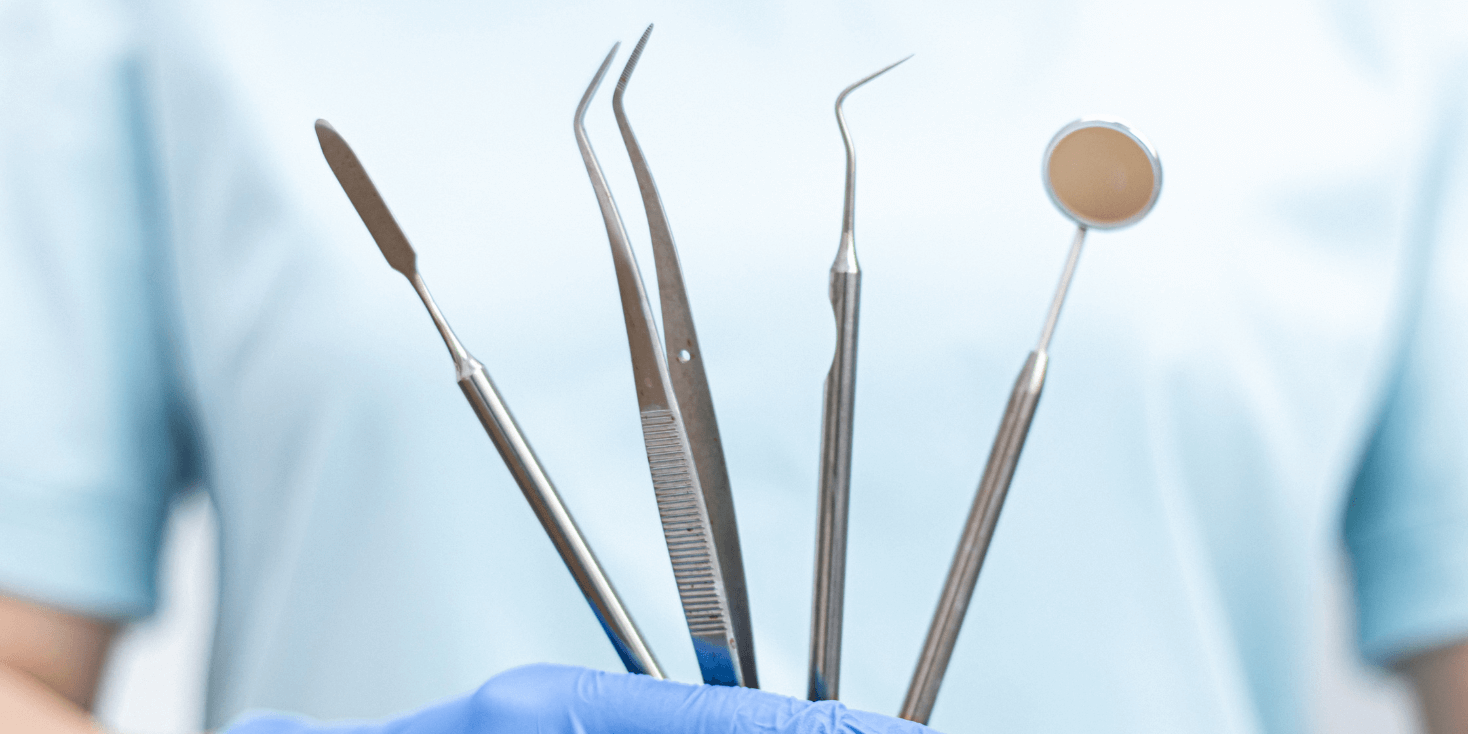
Table of Contents
Get Dental Catalogue PDF On Your Email
Gracey Curette 9/10 vs. Gracey Curette 11/12: Understanding the Differences and When to Use Each
Dental professionals use precise tools to keep our mouths healthy. These tools are especially important for treating gum disease and removing plaque. Gracey curettes are one of these essential tools. They are designed to clean specific areas of the mouth. In this post, we’ll take a closer look at the Gracey curette 9/10 and the Gracey curette 11/12. We’ll explore their main differences, uses, and when each tool works best.
What Are Gracey Curettes?
Gracey curettes are periodontal instruments used for scaling and root planing, which is important for treating and preventing gum disease. They are designed to reach difficult areas in the mouth, making them very useful for removing tartar, plaque, and bacteria from the surfaces of teeth and under the gum line.
Key Features of Gracey Curettes
Gracey curettes have several common features that make them useful for dental professionals:
- Curved Blade: Each Gracey curette has a curved blade that makes it easier to access different surfaces of the teeth.
- Angled Shank: The shank of the curette is angled in specific ways, allowing for precise cleaning in specific areas of the mouth.
- Ergonomic Handle: The handle provides better control and grip, which is important for properly removing plaque without causing discomfort.
Understanding Gracey Curette 9/10
The Gracey curette 9/10 is primarily designed for cleaning the buccal (cheek-side) and lingual (tongue-side) surfaces of the posterior teeth. This curette is ideal for reaching areas that may be harder to clean with other instruments.
Key Features of Gracey Curette 9/10
- Curvature and Blade Design: The curved blade of the 9/10 makes it easier to remove plaque from the back teeth, especially in tight spaces between the gums and teeth.
- Posterior Focus: This curette works best for cleaning the surfaces of the back teeth. It helps dental professionals reach areas that are often missed during regular brushing and flossing.
- Precision: Its design offers better access to the curved surfaces of the molars and premolars, ensuring that the buccal and lingual sides are cleaned thoroughly.
Understanding Gracey Curette 11/12
The Gracey curette 11/12 is designed specifically for cleaning the mesial (front-side) surfaces of posterior teeth. It is widely used in periodontal procedures to access difficult-to-reach areas in the back of the mouth.
Key Features of Gracey Curette 11/12
- Angle and Design: The 11/12 curette has a specific angle that allows it to clean the mesial surfaces of molars and premolars. Its angled shank helps dental professionals navigate tricky spots more easily.
- Mesial Surface Focus: This curette is used primarily for scaling and root planing on the mesial surfaces, which are often harder to reach with general tools.
- Efficient Plaque Removal: Its design is optimized for removing plaque and tartar from the front-side surfaces of the back teeth, helping to maintain oral health and prevent gum disease.
Visit carrothcp Dental Catalogue Book to know more about dental tools.
Key Differences Between Gracey Curette 9/10 and Gracey Curette 11/12
While both curettes serve the same general purpose of cleaning teeth, they are designed for different areas of the mouth. Here are the key differences between the two:
Purpose and Use
- Gracey Curette 9/10: The 9/10 is ideal for cleaning the buccal and lingual surfaces of the back teeth. It is useful for reaching the outer and inner surfaces of molars and premolars, which can be hard to clean with regular brushing.
- Gracey Curette 11/12: The 11/12 is specifically designed for cleaning the mesial surfaces of posterior teeth. It allows dental professionals to remove plaque from the front-side surfaces of back teeth, areas that are particularly prone to plaque buildup and gum disease.
Design and Angle
- Gracey Curette 9/10: The 9/10 curette has a curved blade and a more generalized design that makes it suitable for cleaning the surfaces of back teeth from both the buccal and lingual sides.
- Gracey Curette 11/12: The 11/12 curette has a more specialized angle designed for cleaning the mesial surfaces, making it more targeted in its application.
Application in Periodontal Treatment
Both curettes are essential for periodontal treatment, but their areas of focus are different. The Gracey curette 9/10 is perfect for buccal and lingual cleaning, while the Gracey curette 11/12 focuses on mesial cleaning. A dental hygienist may switch between the two curettes during a procedure, depending on the specific area of the mouth being treated.
When to Use Each Curette
Knowing when to use the Gracey curette 9/10 and the Gracey curette 11/12 is important for providing proper periodontal care.
- Use the Gracey Curette 9/10 When:
- Cleaning the buccal and lingual surfaces of posterior teeth.
- Removing plaque from the outer and inner surfaces of molars and premolars.
- Performing routine scaling and root planing for patients with gum disease affecting the posterior teeth.
- Use the Gracey Curette 11/12 When:
- Cleaning the mesial surfaces of posterior teeth, especially in areas where plaque buildup is common.
- Treating patients with gum disease or those needing deep cleaning on the front-side surfaces of their back teeth.
- Ensuring thorough cleaning of the molars and premolars, where regular brushing often fails to reach.
Why Proper Curette Selection Matters
Choosing the correct curette can make a significant difference in the success of periodontal treatment. Both the Gracey curette 9/10 and the Gracey curette 11/12 are designed for specific areas of the mouth, and using them appropriately ensures more effective cleaning and plaque removal. Proper tool selection also minimizes the risk of causing discomfort or injury to the gums and teeth during treatment.
Maintenance and Care of Gracey Curettes
Like all dental instruments, maintaining Gracey curettes is essential to their performance and longevity. Here are some tips for proper care:
- Sterilization: Always sterilize curettes after each use to prevent the spread of bacteria and infection.
- Regular Inspections: Inspect the curettes regularly for signs of wear, as a dull blade can reduce the usefulness of the instrument and cause discomfort for patients.
- Sharpening: Keep the blades sharp to ensure precision during periodontal procedures.
- Proper Storage: Store curettes in a clean, dry area to maintain their condition and prevent damage.
Conclusion
In summary, understanding the differences between the Gracey curette 9/10 and the Gracey curette 11/12 is key to successful periodontal care. Both instruments serve unique purposes in cleaning different areas of the mouth, and choosing the right one for the job ensures effective treatment. By using these tools correctly, dental professionals can provide their patients with the best care possible, helping to prevent and treat gum disease.
For further information on periodontal instruments, visit periodontal scaling techniques or learn more about plaque and tartar removal tools. These resources will give you a deeper understanding of the role of specialized tools like Gracey curettes in maintaining optimal oral health.

